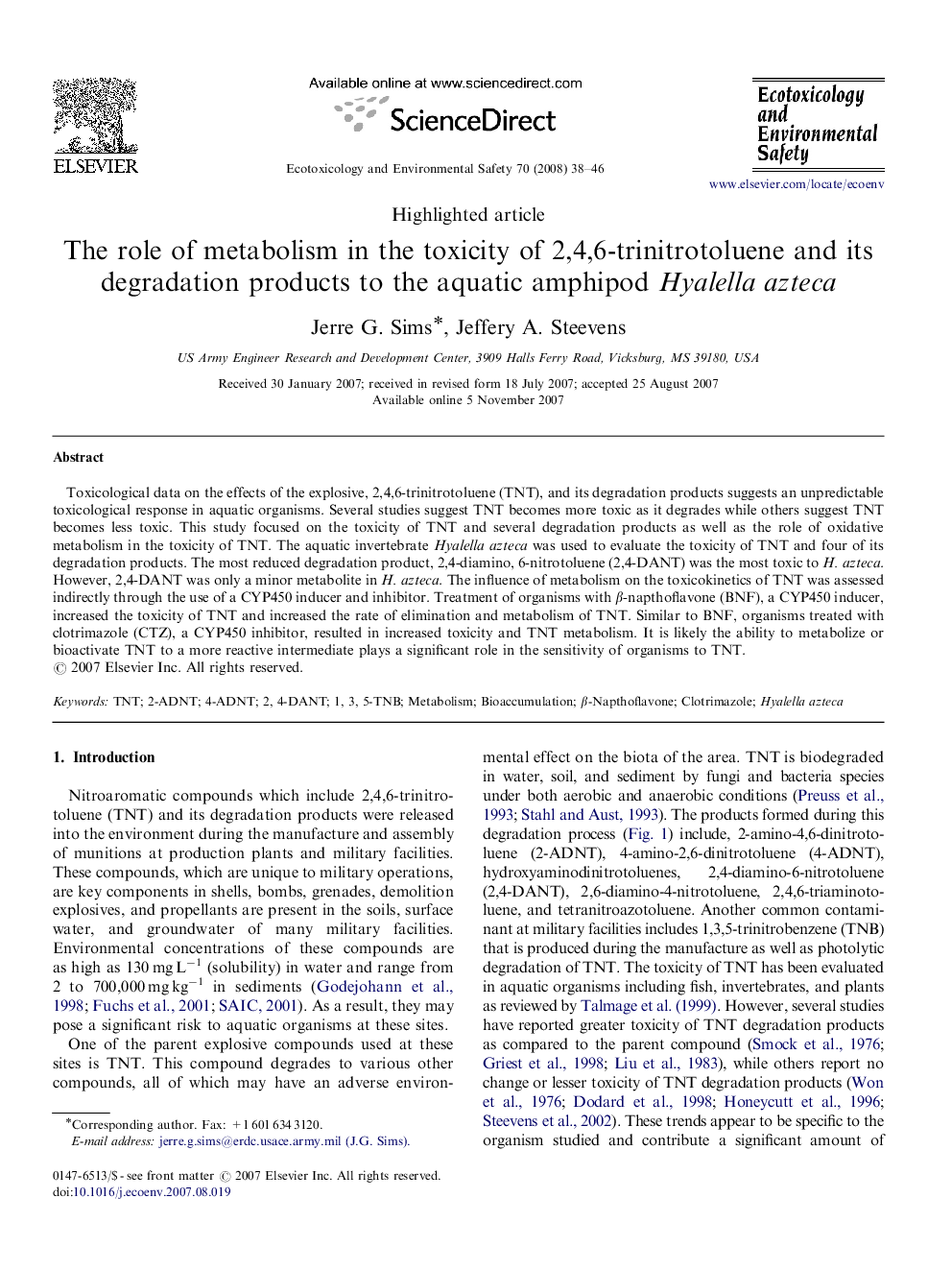| کد مقاله | کد نشریه | سال انتشار | مقاله انگلیسی | نسخه تمام متن |
|---|---|---|---|---|
| 4422149 | 1308533 | 2008 | 9 صفحه PDF | دانلود رایگان |

Toxicological data on the effects of the explosive, 2,4,6-trinitrotoluene (TNT), and its degradation products suggests an unpredictable toxicological response in aquatic organisms. Several studies suggest TNT becomes more toxic as it degrades while others suggest TNT becomes less toxic. This study focused on the toxicity of TNT and several degradation products as well as the role of oxidative metabolism in the toxicity of TNT. The aquatic invertebrate Hyalella azteca was used to evaluate the toxicity of TNT and four of its degradation products. The most reduced degradation product, 2,4-diamino, 6-nitrotoluene (2,4-DANT) was the most toxic to H. azteca. However, 2,4-DANT was only a minor metabolite in H. azteca. The influence of metabolism on the toxicokinetics of TNT was assessed indirectly through the use of a CYP450 inducer and inhibitor. Treatment of organisms with β-napthoflavone (BNF), a CYP450 inducer, increased the toxicity of TNT and increased the rate of elimination and metabolism of TNT. Similar to BNF, organisms treated with clotrimazole (CTZ), a CYP450 inhibitor, resulted in increased toxicity and TNT metabolism. It is likely the ability to metabolize or bioactivate TNT to a more reactive intermediate plays a significant role in the sensitivity of organisms to TNT.
Journal: Ecotoxicology and Environmental Safety - Volume 70, Issue 1, May 2008, Pages 38–46